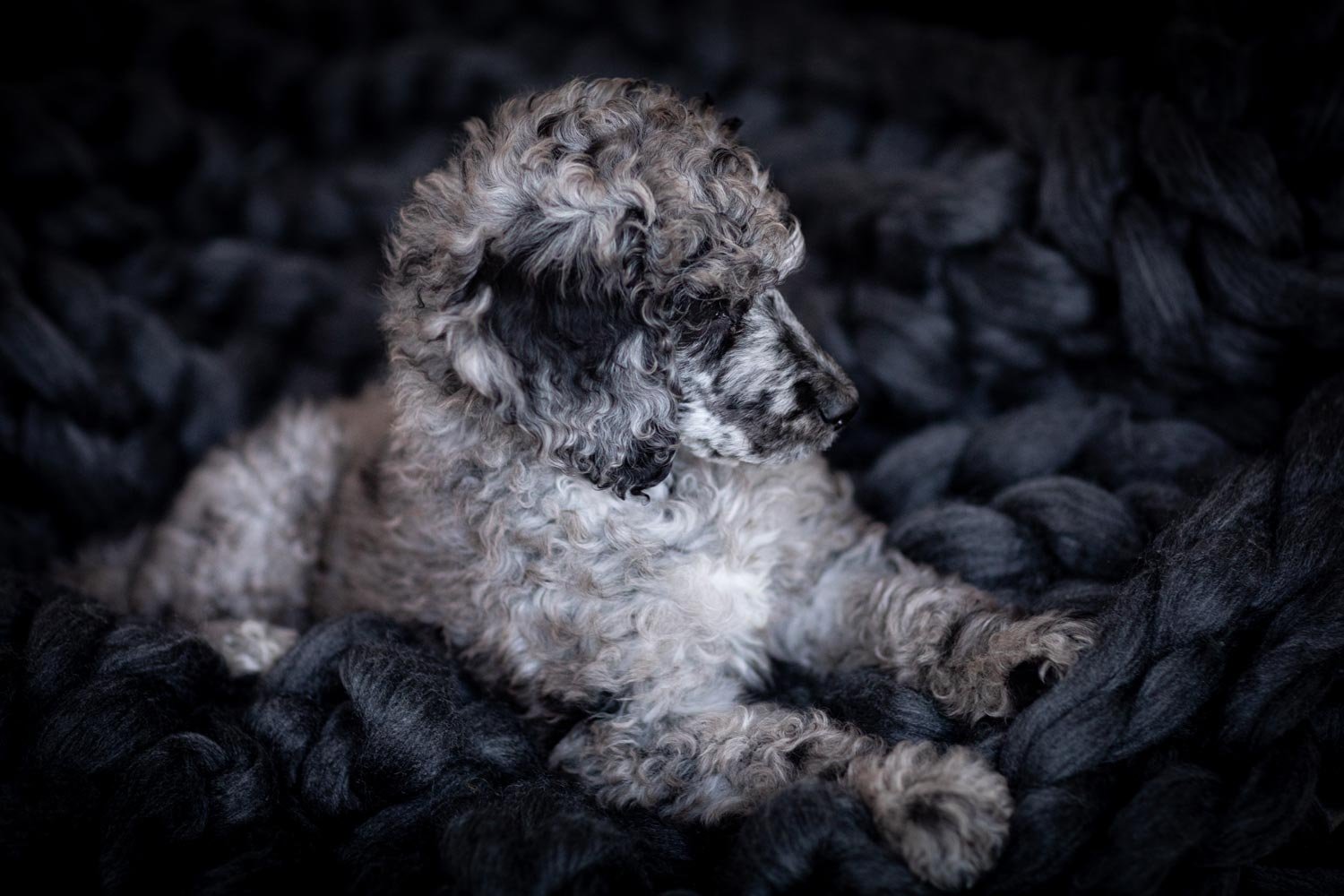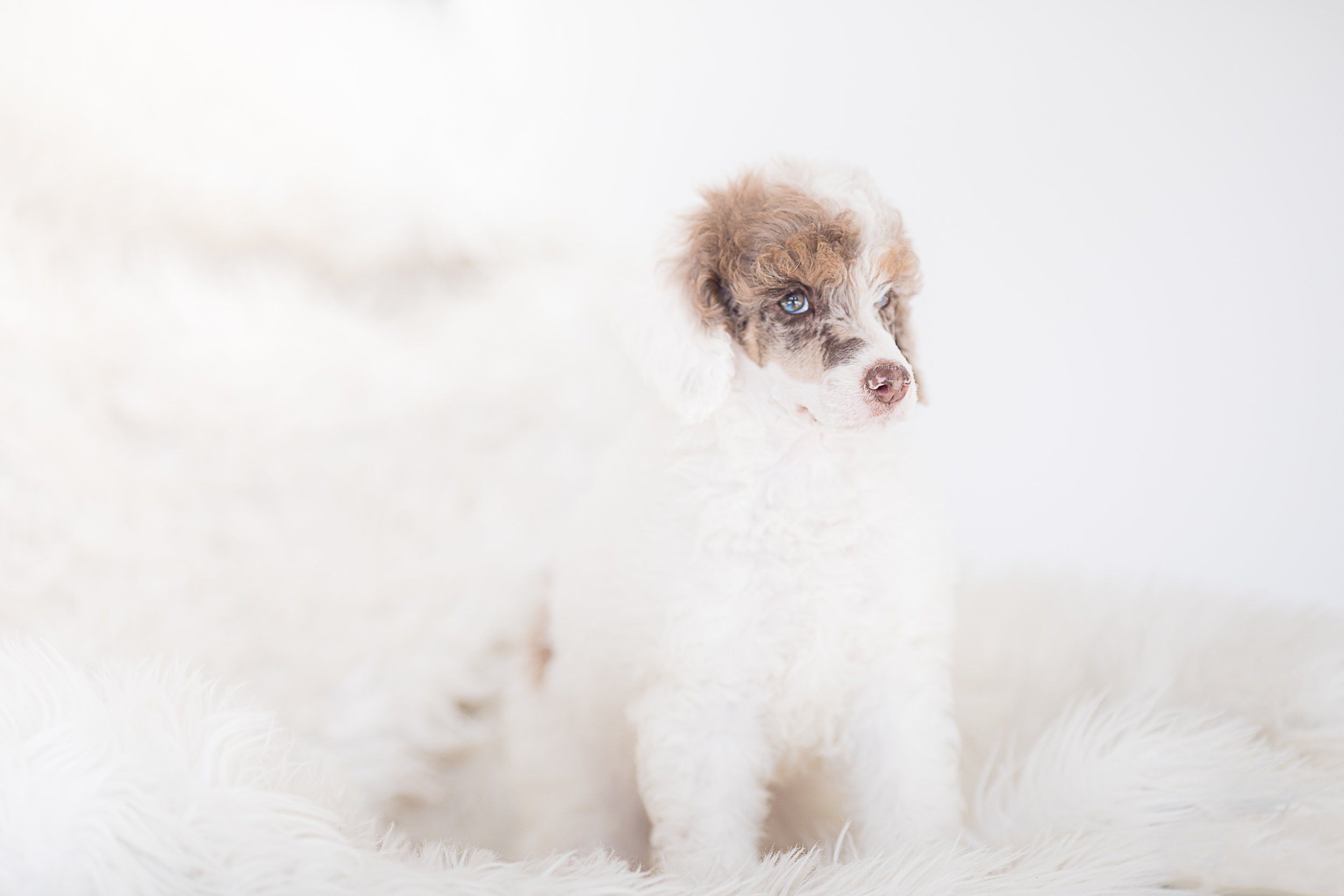Are merle poodles purebred?
Black Merle Standard Poodle - The Merle Gene In Poodles
Overview
A merle poodle has a cacophony of colors on its coat. Merle tends to express itself in patches, dots, spots, and dashes. Merle is a genetic pattern that can be in a dog's coat. Merle comes in different colors and patterns and can affect all coat colors. The merle gene creates mottled patches of color in a solid or piebald coat, blue or odd-colored eyes, and can affect skin pigment as well. Heterozygosity for a Short INterspersed Element (SINE) insertion in canine PMEL causes a striking pigmentation pattern, known as merle, that is unique to domesticated dogs. The Merle Gene is an incomplete dominant gene, which means that it only requires one copy to reproduce it.
Yes, Merle Poodles are purebred. Poodles are a breed of dog that are known for their intelligence, athleticism, and hypoallergenic coat. There are three sizes of Poodles: Standard, Miniature, and Toy. Merle is a coat color pattern that is found in some purebred dogs, including Poodles. The Merle coat color pattern is characterized by a mottled or marbled appearance, with patches of solid color mixed with areas of diluted or faded color. The Merle pattern can occur in a variety of colors, including blue, red, chocolate, and black. It is important to note that the Merle coat pattern is not recognized by all Poodle breed standards, so it is not considered a standard coat color in some Poodle breed clubs. However, it is still considered a purebred Poodle.
It has been recognized that the Merle coat pattern in dogs is not only a visually interesting feature, but it also exerts an important biological role, in terms of hearing and vision impairments. In 2006, the Merle (M) locus was mapped to the SILV gene (aka PMEL) with a SINE element in it, and the inserted retroelement was proven causative to the Merle phenotype. Mapping of the M locus was a genetic breakthrough and many breeders started implementing SILV SINE testing in their breeding programs. Unfortunately, the situation turned out complicated as genotypes of Merle-tested individuals did not always correspond to expected phenotypes, sometimes with undesired health consequences in the offspring. Two variants of SILV SINE, allelic to the wild type sequence, have been described so far–Mc and M. Here we report a significantly larger portfolio of existing Merle alleles (Mc, Mc+, Ma, Ma+, M, Mh) in Merle dogs, which are associated with unique coat color features and stratified health impairment risk. The refinement of allelic identification was made possible by systematic, detailed observation of Merle phenotypes in a cohort of 181 dogs from known Merle breeds, by many breeders worldwide, and the use of advanced molecular technology enabling the discrimination of individual Merle alleles with significantly higher precision than previously available. We also show that mosaicism of Merle alleles is an unexpectedly frequent phenomenon, which was identified in 30 out of 181 (16.6%) dogs in our study group. Importantly, not only major alleles but also minor Merle alleles can be inherited by the offspring. Thus, mosaic findings cannot be neglected and must be reported to the breeder in their whole extent. Most importantly, sperm cells seem to be a significant source of germline Merle allelic variants which can be passed to the offspring on a Mendelian basis and explain unusual genotype/phenotype findings in the offspring. In light of negative health consequences that may be attributed to certain Merle breeding strategies, we strongly advocate the implementation of the refined Merle allele testing for all dogs of Merle breeds to help the breeders in the selection of suitable mating partners and production of healthy offspring.
The Merle pattern can be seen in various breeds, such as the Australian Shepherd Dog, Australian Koolie, Border Collie, Dachshund, French Bulldog, Louisiana Catahoula, Labradoodle, Miniature American Shepherd, Miniature Australian Shepherd, Pyrenean Shepherd, Rough Collie, Shetland Sheepdog, Welsh Sheepdog, Cardigan Welsh Corgi, Chihuahua, Great Dane etc. Merle is thought to be inherited in an autosomal, incomplete dominant way. Dogs heterozygous for the M allele show a typical coat pattern, however, dogs homozygous for the M allele may also exhibit auditory and ophthalmologic impairments and abnormalities together with very pale or completely white coat phenotypes (Strain et al. 2009). Such negative health effects associated with the M locus encouraged the research to identify the gene responsible.
Source: https://www.ncbi.nlm.nih.gov/pmc/articles/PMC6147463/
Specific sizes of the M Allele have been associated with the potential to produce “classic” merle patterning or other M-associated coat color variations. Merle is most appropriately viewed as a spectrum of coat colors/patterns and the size of the variant M allele is associated with a coat color/pattern somewhere within that spectrum. Although some coat color/pattern variations have been associated with specific sizes of the M allele in certain breeds, referred to here as a ‘bin’, the size of the M allele does not guarantee a specific outcome.
In general, dogs with M allele sizes between 200 – 246 base pairs (bp) have been associated with non-merle or minimal-merle coat colors/patterns and are often referred to as “cryptic” merle; M allele sizes between 247 – 264 bp have been associated with “atypical” or “diluted” coat colors/patterns; M allele sizes between 265 – 269 bp have been associated with the “classic” merle coat colors/patterns; and M allele sizes between 270 – 280 bp have been associated with “tweed”, “harlequin” or “patchwork” merle coat colors/patterns
Cryptic merles, don’t show any of the obvious merle traits. They look like a traditional merle, however, what makes them merle is their genetics. Cream, Red, Apricot, or Parti can hide the Merle pattern.
Concerning AKC classification, merle is often noted as Black & Silver or Brown and Tan.
Merle poodles, however, can put you out a whopping $5,000. This is pretty standard for the type of poodle (standard, toy, or miniature) and age range (puppy or adult). Merle dogs of any breed are likely to be more expensive than solid-colored dogs, even though a lot of responsible breeders try to change that. Depending on how rare the merle pattern is in the breed and how much the standard price for a puppy is, your merle dog might cost up to $3,000
Are merle poodles purebred?
Red Merle Parti Poodle with Blue Eyes




